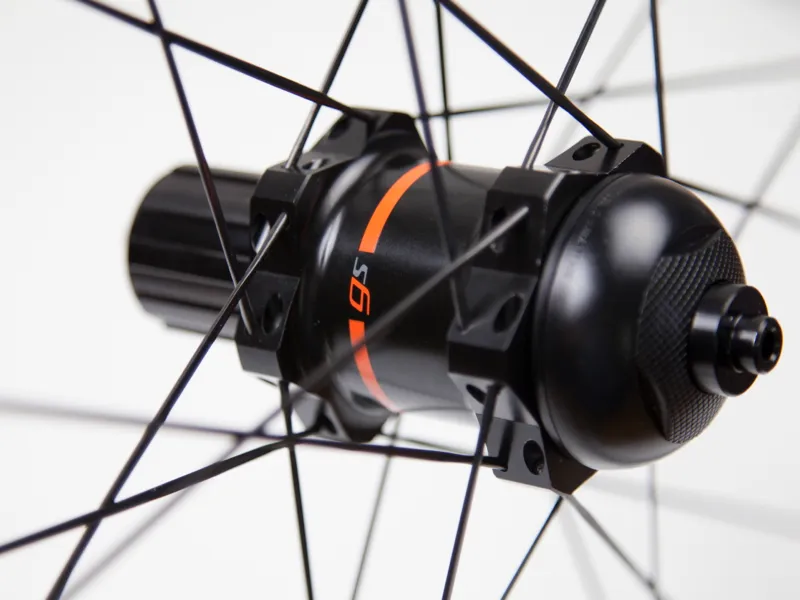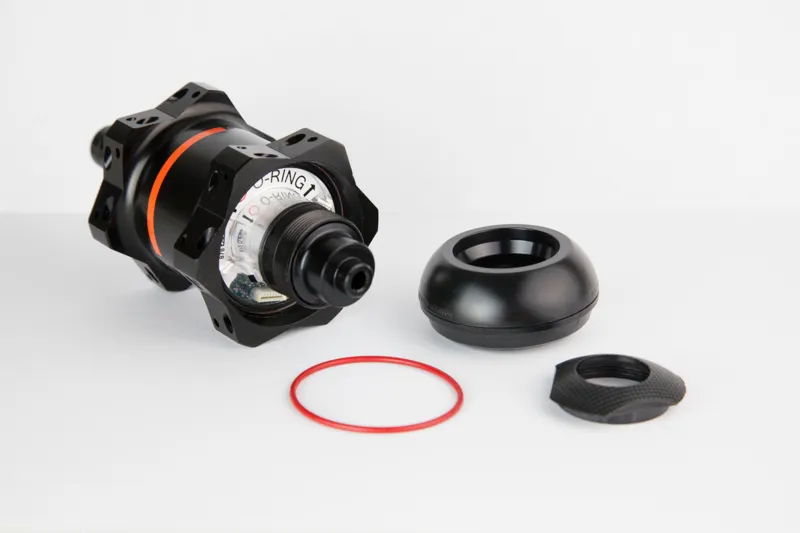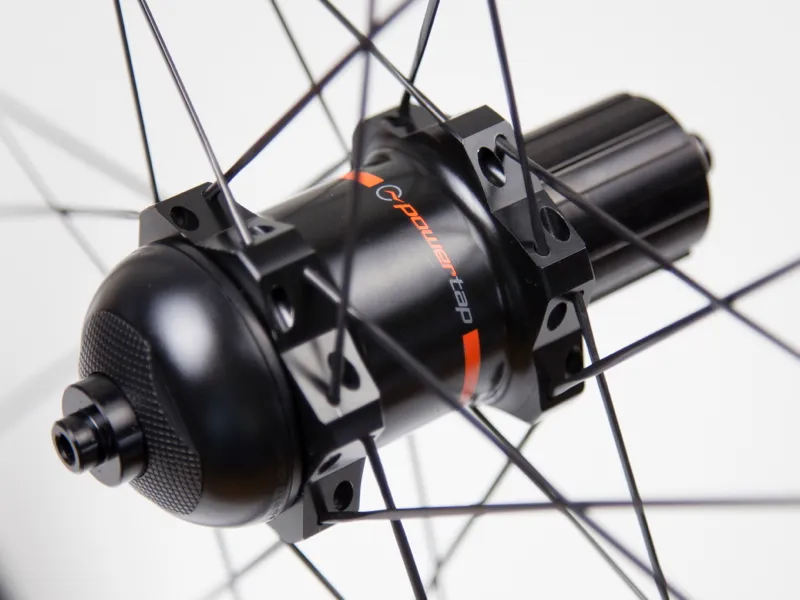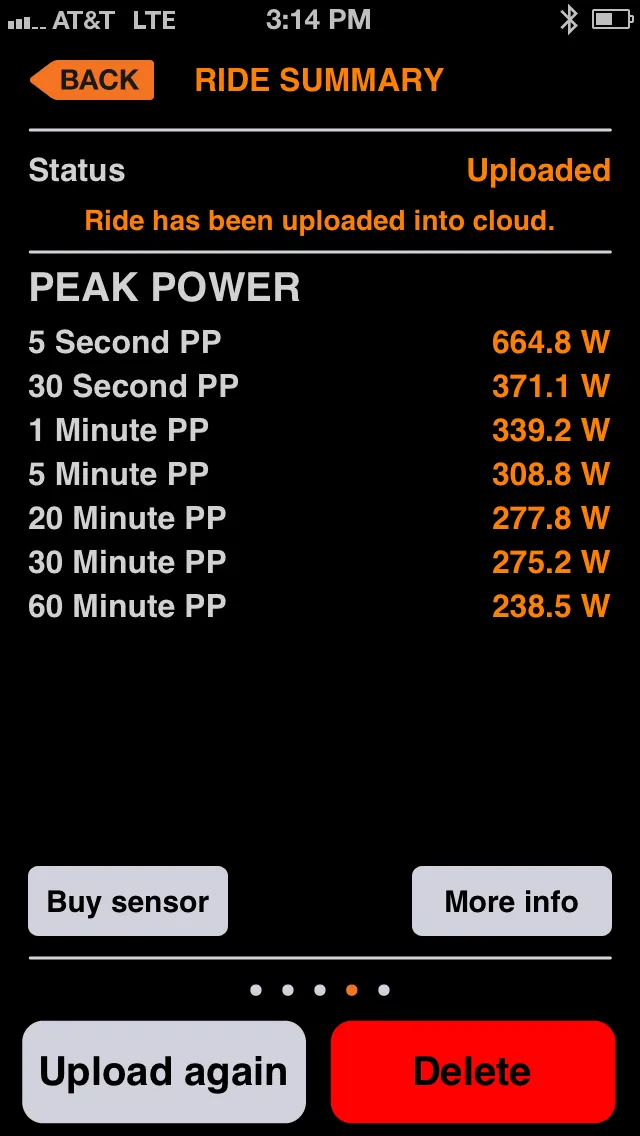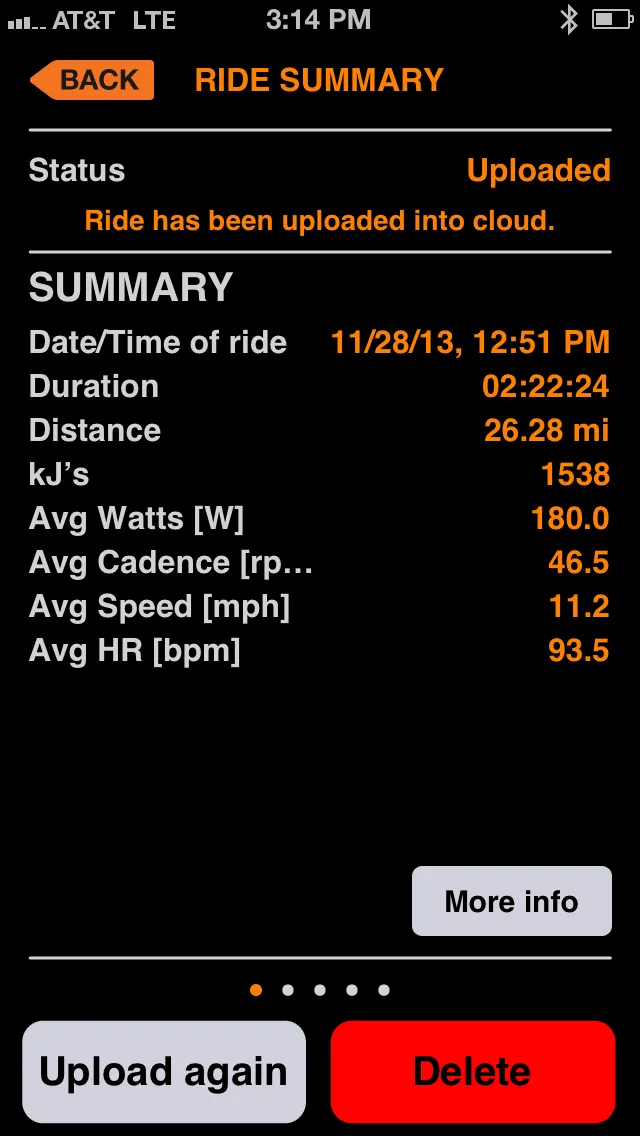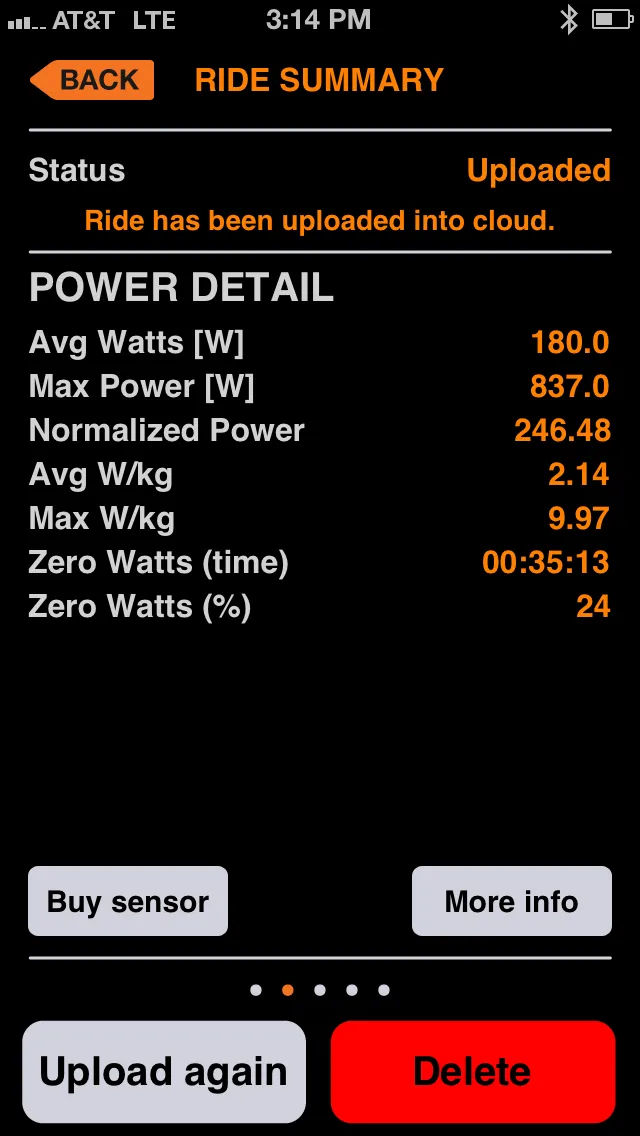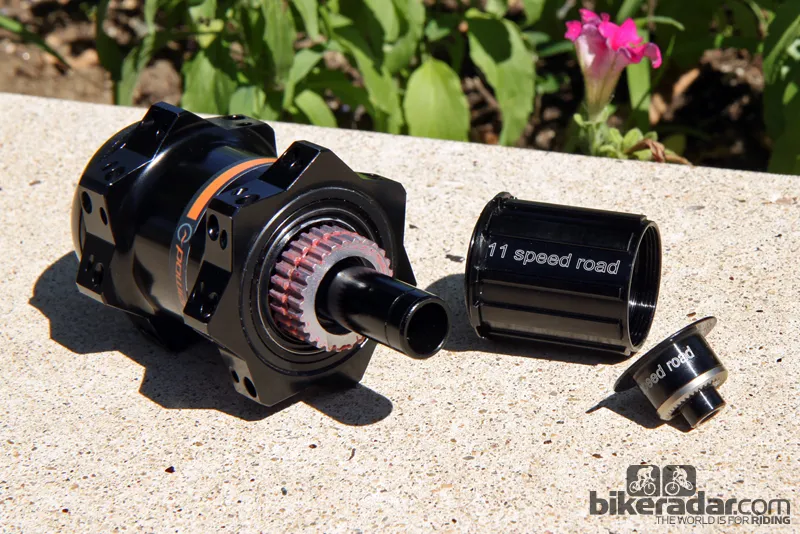The PowerTap GS Zipp 202 wheelset is one of a few racy wheelsets built with the new PowerTap GS hub, which can work on ANT+ or Bluetooth with the swap of an end cap. In months of testing we found this set to be highly reliable, with wattage numbers tracking alongside those from SRM and Garmin Vector, and stiffness, trueness and durability at the level you'd expect from a $3,000 wheelset.
As with all power meters, this set ties you to a particular component; you have to choose between getting power data or being able to swap in other rear wheels. On the upside, moving the GS to another bike is as easy as swapping any other rear wheel. And with race-level wheelsets like this 202 set and other Zipp and ENVE options, PowerTap is clearly wanting to reposition the idea of a PowerTap wheel as 'a training tool' to 'a racing and training tool.' With a weight penalty of just 130g at the rear hub over a standard Zipp 202 set, racing on these is as viable as training on them year-round.
Pricewise, it's about $300 more than a standard Zipp 202.
We are big fans of Zipp's latest carbon clincher rims. Braking is good and predictable in both the dry and wet. Durability is excellent; we abused this wheelset and another 202 set over many a dirt road and cyclocross race without issue. And the wider profile (16.25 inner rim width) allows for a broad tire stance. At 32mm tall, the 202s add a bit of aerodynamic benefit without adding any significant weight. In fact, BikeRadar UK and US testers dubbed the Zipp 202 carbon clinchers best in class in a review last year.
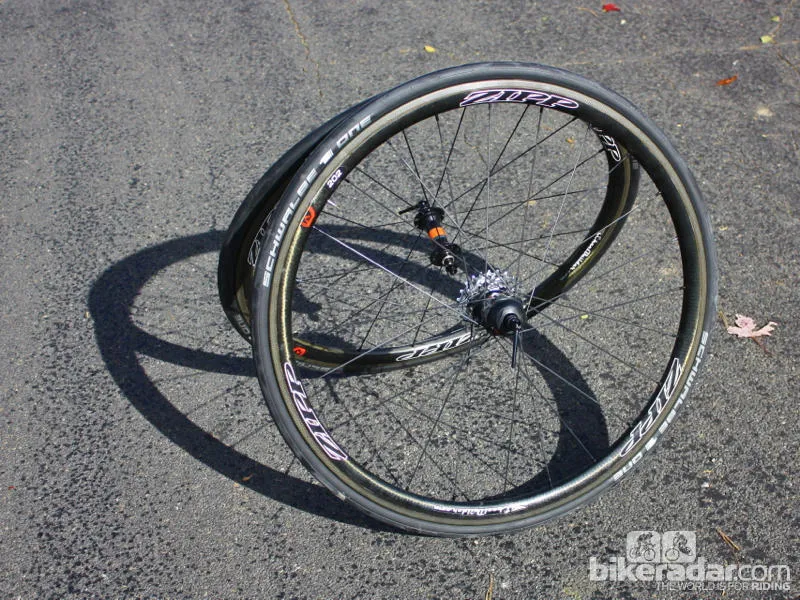
The GS wheels feature DT Swiss internals and weigh in at 1,510g/3.33lb (630g front, 880g rear), plus 41g for the pair of titanium skewers. A stock Zipp 202 wheelset, by contrast, weighs 1,380g/3.04lb. Featuring PowerTap’s new black-and-orange scheme, the GS rear hubs feature DT Swiss axles, bearings, star ratchet, freehub body, end caps and straight-pull flange. The front hub is essentially a 240s DT Swiss model.
We tested the wheels for power data against a new SRM, a set of Garmin Vector pedals and a Stages meter. We tested all four with Garmin Edge 500 units with synchronized recording settings, and calibrated each unit before every ride. Post-ride analysis was done in TrainingPeaks. Over the course of a dozen rides, the GS would typically record within 1-5 average watts of the SRM and the Vector, usually just a couple of watts higher than those two for rides with average power in the 140-200w range and normalized power in the 200-275w range. All that to say, we found the company's accuracy claims to be valid. Further, albeit anecdotally, several BikeRadar staffers have had other PowerTap wheels for years, having found them to be a reliable tool, season after season. Here are four sample rides:
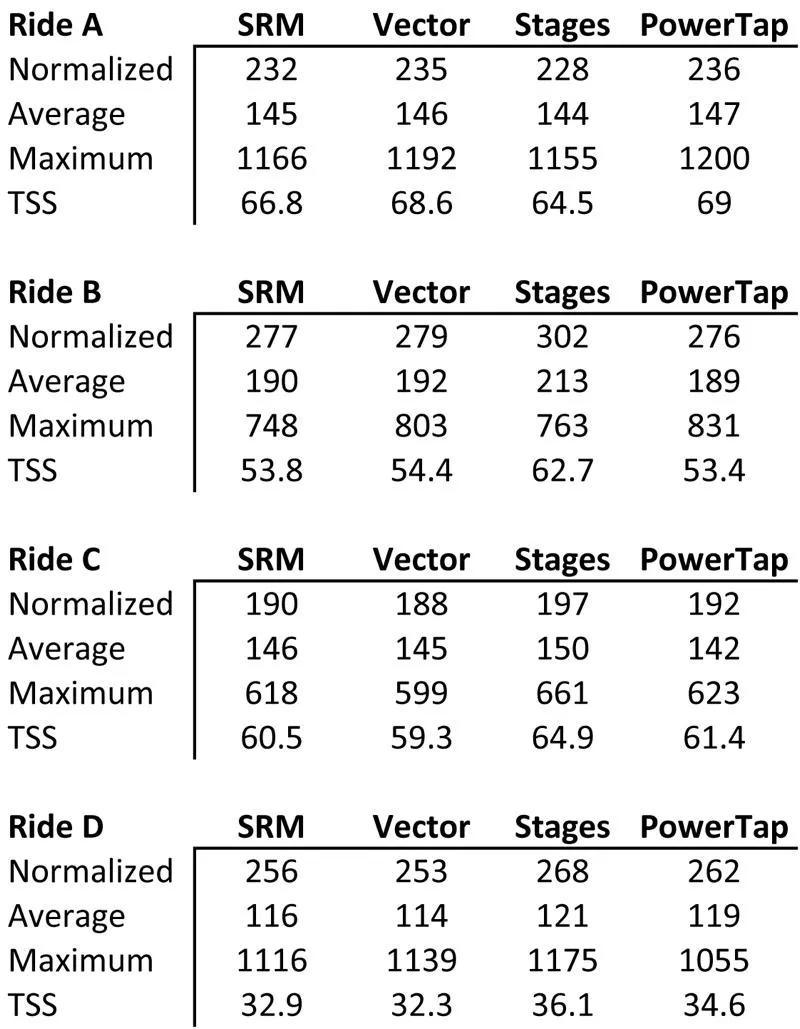
The GS wheels can transmit data in the smartphone-friendly Bluetooth or ANT+, the wireless signal that most cycling computers like Garmin's Edge units now use, with an exchange of a $130 end cap called a Powercap. (Most power meters are ANT+ only, except the left-crank-based Stages power meter, which transmits in both ANT+ and Bluetooth simultaneously.) Frankly, Stages has the better format solution. Who wants to fiddle with hardware back and forth on a wheel, not to mention pony up an additional $130 for a $3,000 wheelset? That said, the PowerTap Bluetooth signal proved stronger in our testing than that of Stages meters (we'd lose that signal with the smartphone in the jersey pocket).
In any event, we tested the GS on Bluetooth with a few smartphone apps, including PowerTap Mobile, which offers a few lines of real-time data while riding and a generous selection of post-ride analysis metrics. Everything works easily and intuitively on the app except the sharing function; one-click shares with Strava and TrainingPeaks are promised but not yet functional. However, if Strava is your thing, then you can simply just use the Strava app with power data streaming in via Bluetooth.
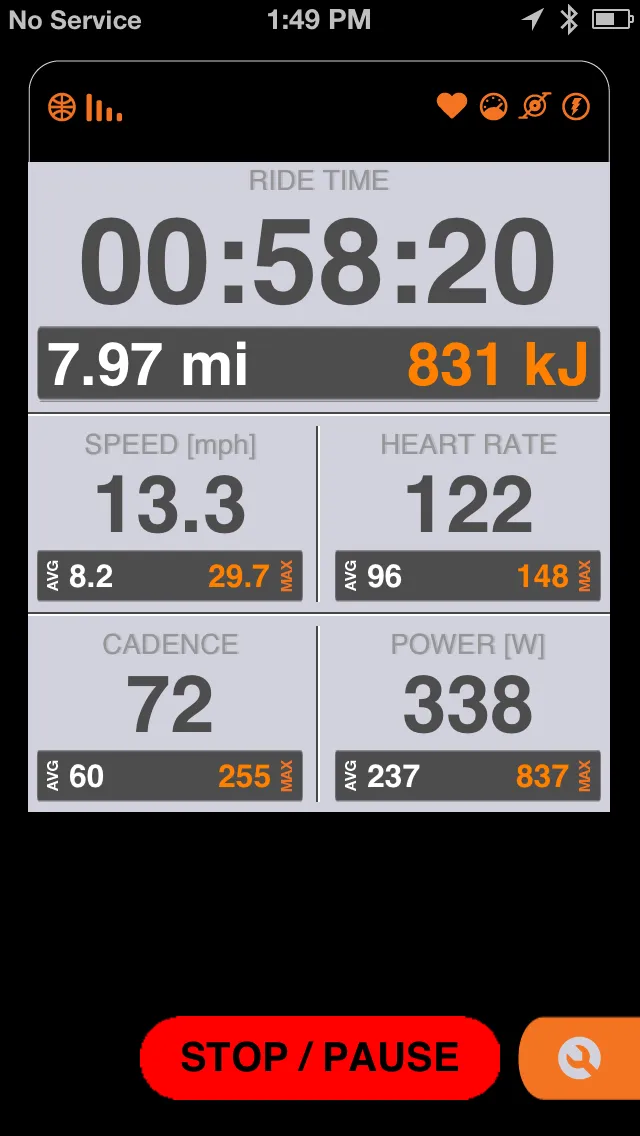
If you want to ditch the ANT+ computer entirely and go 100% smartphone on your rides, PowerTap now has its own Bluetooth speed/cadence sensor and a PowerTap Mobile app.
Claimed battery life is 350 hours for each of the Bluetooth and ANT+ Powercaps, which simply pull off the end of the hub after an exterior plastic nut is unscrewed.
The Zipp 202 configuration will only be available for US customers via PowerTap.com, but the GS hub (£949/AU$1299) and Enve 3.4 and 6.7 wheelsets are available globally. UK riders can find a stockist here.

